-
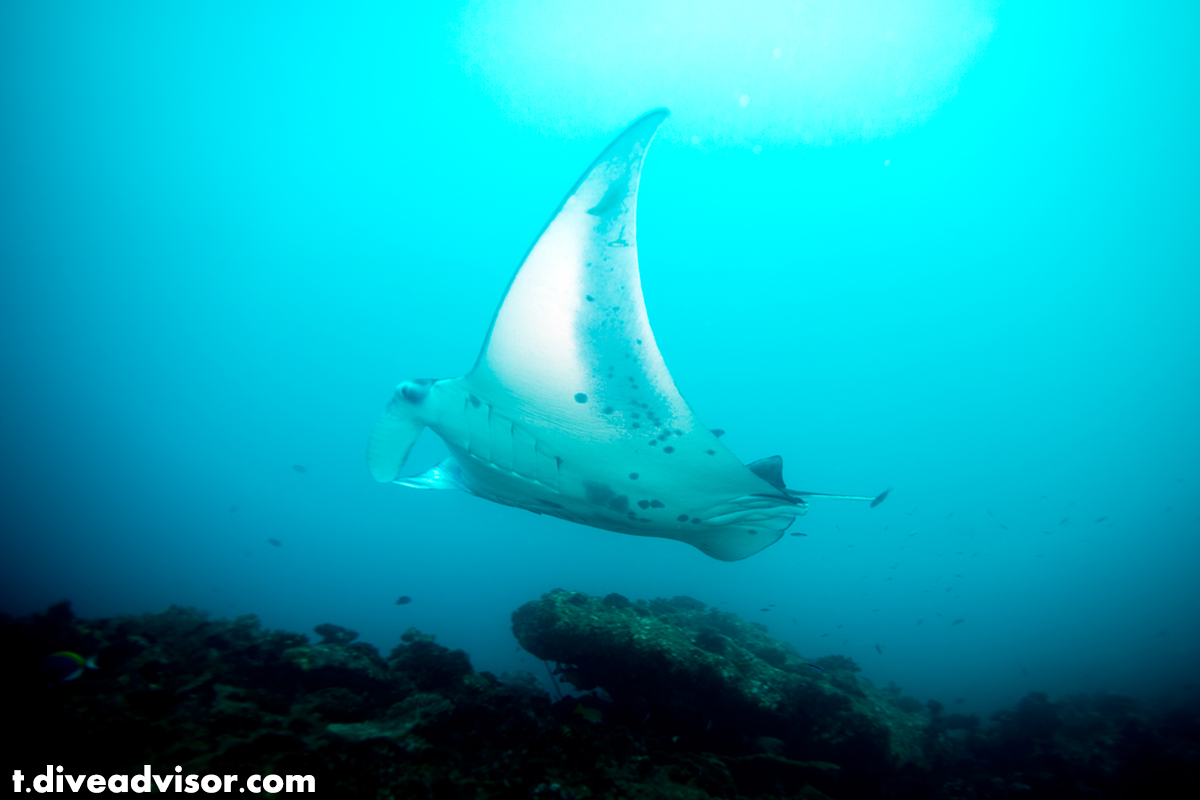
Another One.
-

Open Wide!
Dive operators estimate the mantas show up at Garden Eel Cove 80% of the time. Sometimes it’s only one or two mantas that come to feed, but some nights ten to twenty mantas show up. The most seen in one night is 42! -
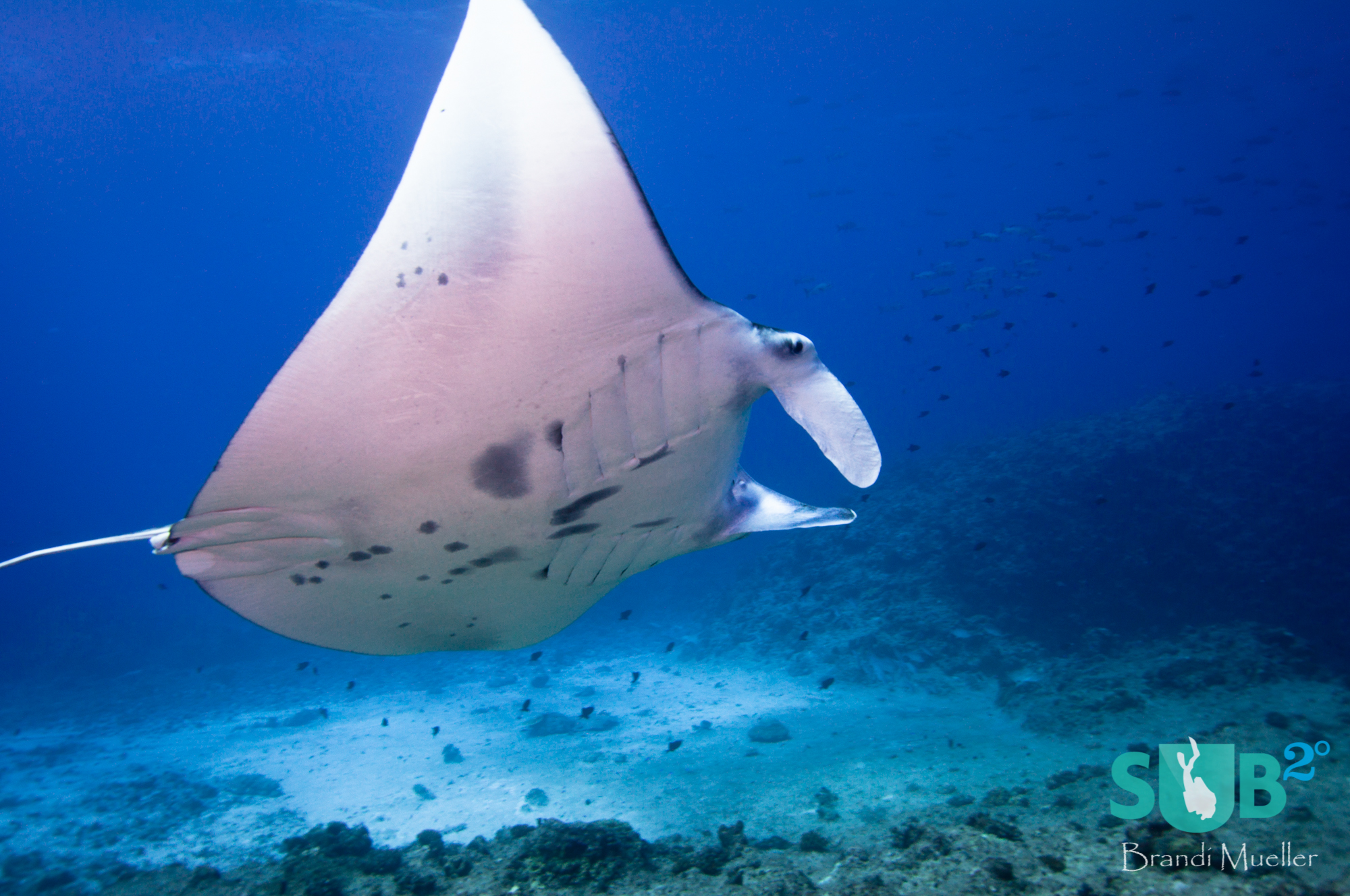
Manta
Manta's often are found at German Channel being cleaned by small wrasses. -
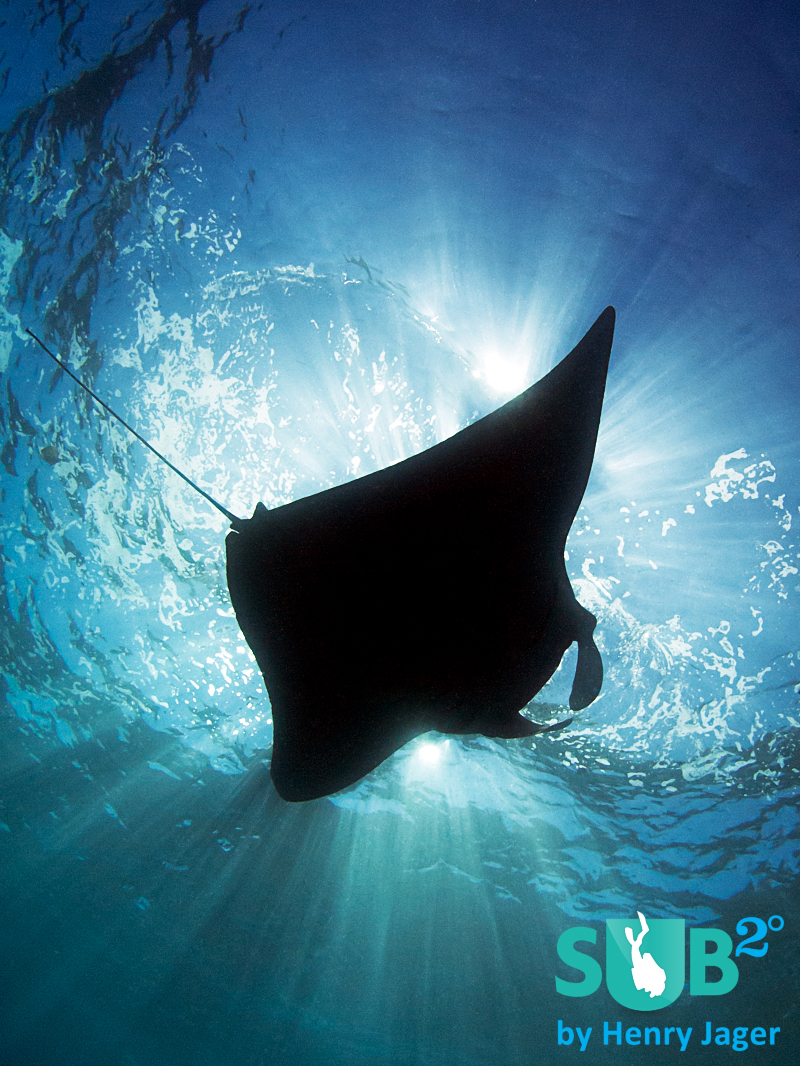
Manta Silhouette
Dancing just below the surface, Manta rays offer a special kind of show. -
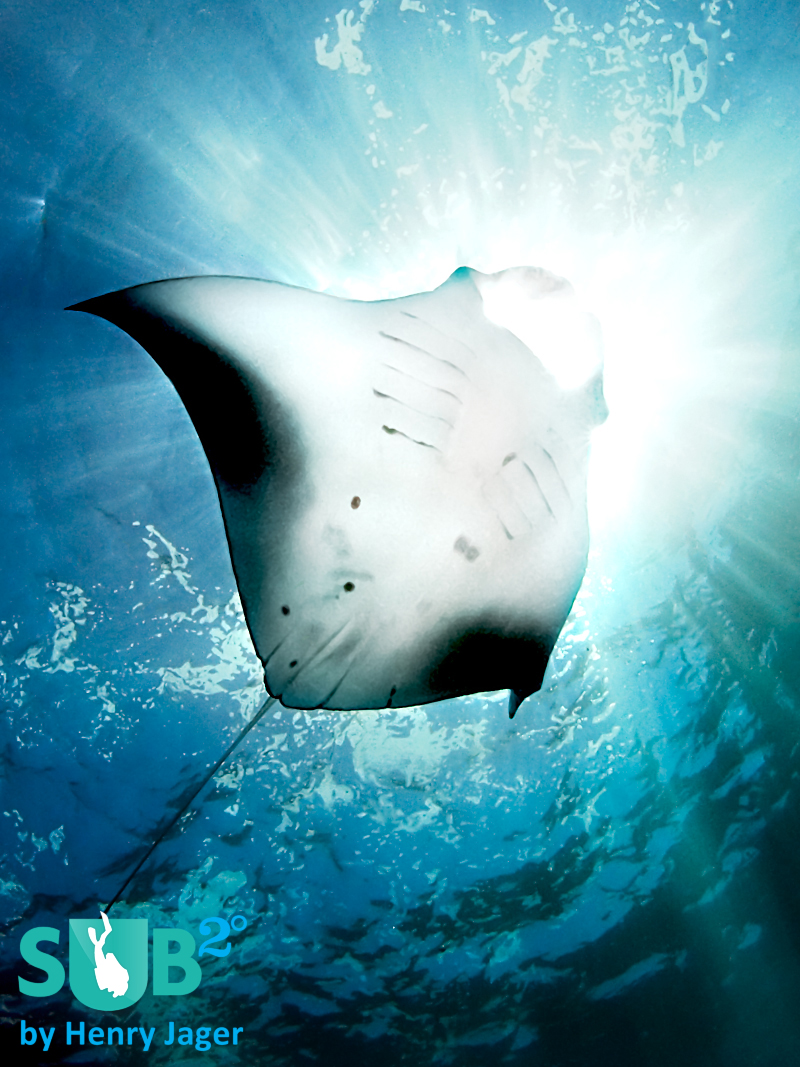
Sun Diver - Manta Ray
Like diving into the sun: Manta Ray at Nusa Penida.
Manta Rays, The Gentle Giants
What Are They?
Manta rays are cartilaginous elasmobranch fishes closely related to all sharks.
Currently, two species of manta rays are recognized: reef manta rays (Manta alfredi) and giant manta rays (Manta birostris). They differ from one another in a variety of ways, including dorsal and ventral coloration, texture of skin and morphology of denticles, number of teeth, and presence of a spine/stinger.
Differences can be found also in behavior, size at maturity, size of the external sexual organs and shape of their bodies.
These animals are amongst the largest fish. Wing spans of the giant manta can exceed 7 meters, and weight up to 2 tones, and wing spans for reef mantas can be up to 5.5 meters, reaching weights of up to 1.4 tones.
Like many of large fish, they have long life spans.
The average is 20 years old, but they probably live to at least 50 and possibly up to 100 years. Both manta rays have very distinct body coloration including natural spot patterns on their ventral surface that is being used by research teams to differentiate individual rays.
Besides one standard color type, Manta species have two rare variant color morphs: black with a variable white spot on the ventral surface (melanistc morph), or white-colored, with an almost entirely absence of pigment (leucistic morph).
How do They Feed?
Manta rays are planktivores. This means they eat mainly zooplankton, which are small marine invertebrates, such as copepods, mysid shrimps and arrow worms. They can also be seen feeding on small species of fish occasionally.
They can display different feeding behaviours. When plankton is evenly distributed, they can feed mid-water, sieving the small organisms with their specialized gill rakers. They can also feed at the surface, using their wide mouths to skim off the surface plankton.
When showing this type of feeding behavior, individuals are seen gulping at surface waters, creating large turbulent wakes in their way while they swim. And here is when it gets interesting: they are known from feeding in large groups, in apparently cooperative behavior.
One, for example, consists in involving mantas in long chains, each ray swimming slightly above the one in front, creating one large collective mouth that traps the plankton.
At Hanifaru Bay in the Maldives, when plankton levels are very dense, mantas exhibit a particularly curious behavior: they form a spiral column of hundreds of animal.
Swimming together, they create a sort of cyclone, in which the current generated leads all zooplankton from outside the column to inside, straight into the manta’s mouths. How cool is that?
How Do They Reproduce?
Scientists believe that mantas are sexually mature at around 15-20 years of age. They are ovoviviparous, meaning that after mating, fertilized eggs grow in the female’s uterus until its development into a fully formed manta pup. It is believed that gestation is of around 1 year, with birth rates averaging around one pup for each mature female every 2-5 years.
What about manta love?
Courtship behavior can be of days or weeks, in a process led by the female.
Competition for females can be fierce, and could be up to 30 males following the female around the reef in what is described as a mating train. The female leads the males, racing and turning around the reef.
Males follow every move in order to prove their fitness and persistence.
At the end, the female selects a male, and the copula happens in mid water, the male biting down on the female’s left wing to lock them together. Love is in the air…I mean, sea.
Where Are They?
Manta rays are found all around the globe, but are more common on tropical oceans. Both species live in the open ocean, visiting reefs to feed and be cleaned.
Giant Manta
The giant manta is more widely distributed, occurring in tropical, sub-tropical and temperate oceans. They are capable of migrations of over a thousand kilometers, suggesting very large home range sizes.
Reef Manta
The reef manta is more limited to the tropics.
It is a more localized species, residing within smaller geographical areas, although they are still capable of long-range movements. It is commonly sighted inshore, within a few kilometers of land, found around coral and rocky reefs as well as along productive coastlines with consistent upwelling, tropical island groups, atolls and bays.
Understanding the broad-scale movements of these animals is critical to understand better their geographical range and migration patterns. This is essential in order to design marine protected areas that can target most needed areas, and can increase the effectiveness of long-term management, including providing information for cooperative management strategies within neighboring countries.
Diving With Manta Rays
It seems that manta rays are very interested in humans, and social and curious behavior towards divers has been reported many times (see great Sub2o stories here and here).
But be careful!
While these creatures don’t pose a threat to humans, the interaction can be dangerous for them. When a human touches a manta ray, the mucus membrane that protects them can be removed, leaving them susceptible to various viruses and bacteria found in the water.
Eco-tourism is a good solution to generate a sustainable balance between protecting animal populations and creating an economically viable alternative to fishing. For instance, the Marine Megafauna Foundation estimated that the global manta ray tourism generates over 50 million dollars annually, while a dead manta values only $250-500 US in fish markets across the world.
Manta tourism may still need more incentives to be a long-term solution (see more about it on this Sub2o post), but it is already a start.
It is possible to dive with these amazing animals in several locations. In Yap, the Maldives and the Hawaiian Islands, manta rays are in a stable status, due to an economically valuable ecotourism and diving operations. Southern Ecuador has the largest population of giant manta rays in the world, with some of the largest individuals on record. In Mozambique, Hawaii, Indonesia and French Polynesia is possible to find both species of manta rays. So, choose your diving spot and enjoy!
Featured Posts
-
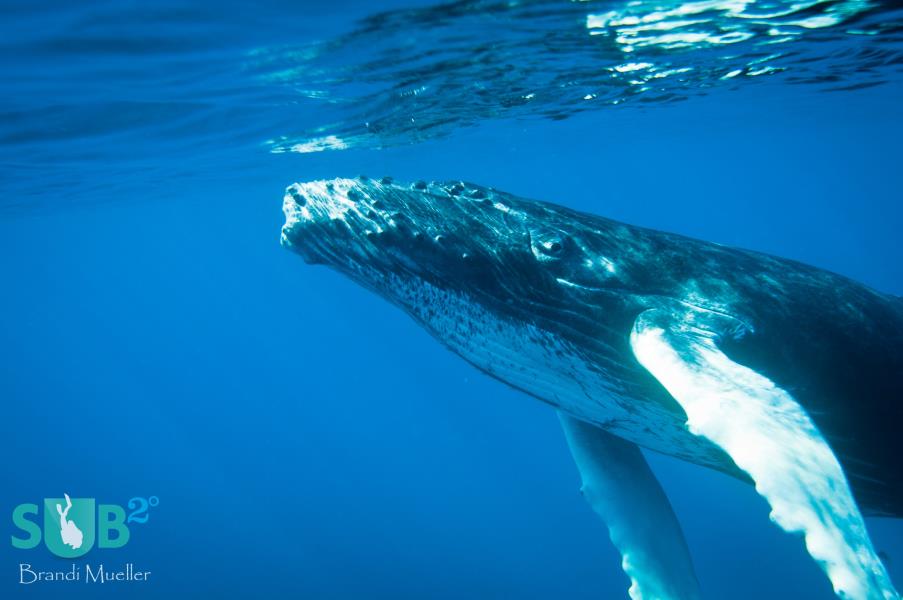
Humpbacks of the Silver Bank
Nothing compares to being in the water with a 40 foot humpback whale. These beautiful and graceful animals are nothing short of amazing. The Silver Bank is a winter gathering place for humpbacks and more recently, snorkele...
-

On Seahorse Love
When boy meets girl in the world of seahorses a beautiful and often extensive courtship occurs. They change colors and entwine their tails. Then they rise off the seafloor and the female deposits her eggs into the male’s p...
-
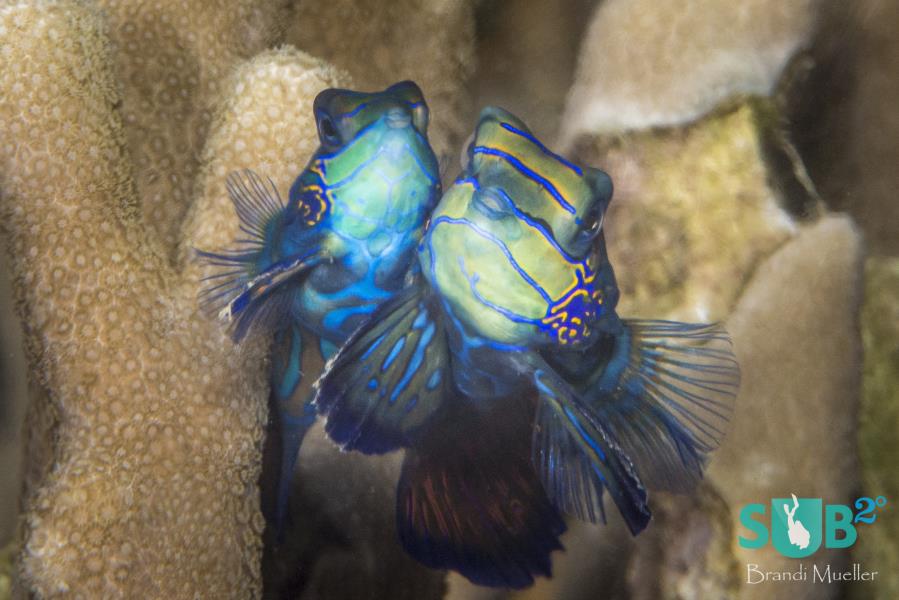
Mandarinfish-The Courtship Dance
On the reefs of the Pacific, twilight marks the beginning of the mandarinfish courtship dance. A male begins dancing, and if he’s desirable, an interested female will join. Just before the sun sets, the two fish will rise u...
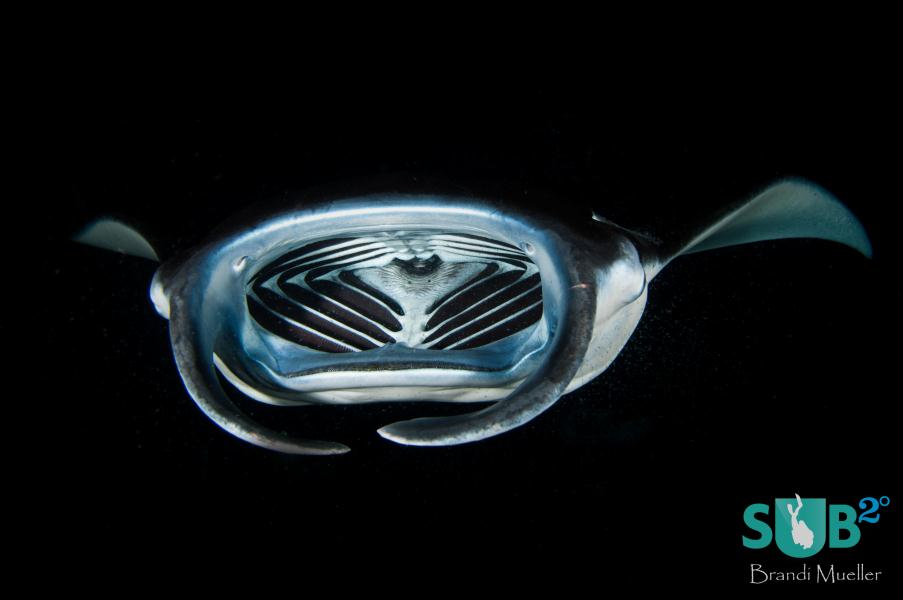
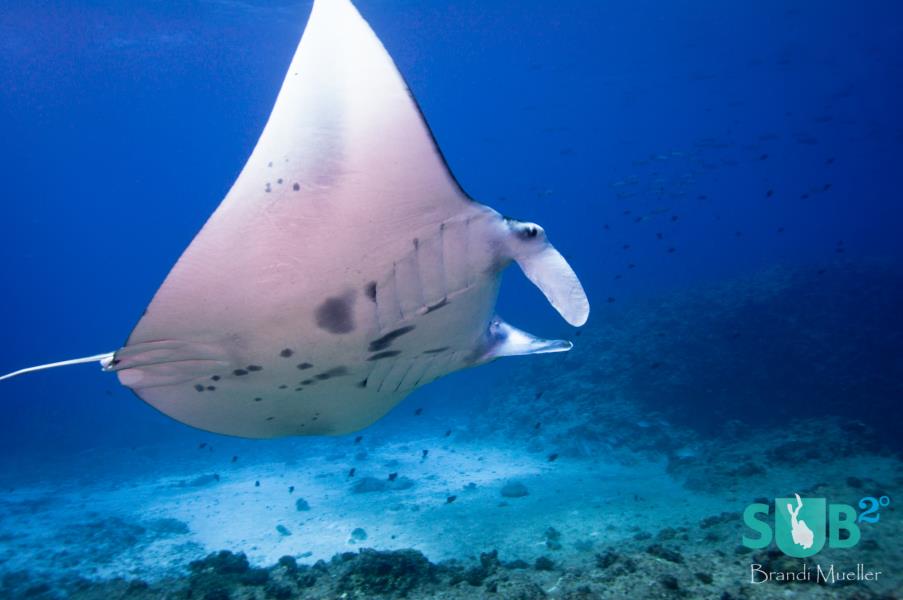

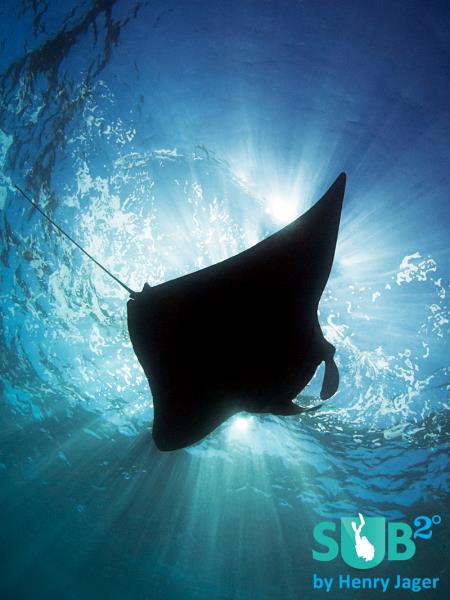


Load more comments
Coral Reef Adventures 5/18/2015 6:21:55 AM Have you ever seen Mantas jumping from the water? They appear to be flying, with their long wings flapping.
Check out this video of these flying giants: https://www.youtube.com/watch?v=-HkeGcj24K0
It surely is a sight to see. When you visit Hawaii, you should take a tour with us and NIght dive with the mantas here.
Coral Reef Adventures 5/18/2015 6:22:44 AM Cristian Ojeda, Manta Rays tails are not venomous. But, their cousins Sting Rays are the ones you should look out for.
Michael Strong 3/13/2020 10:15:55 PM How rich the underwater world is, incredible!